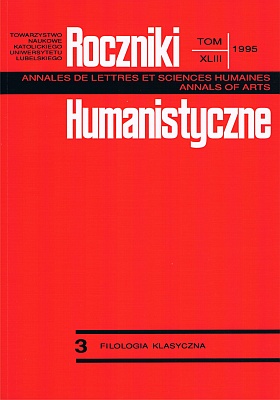Κριός dla Hermesa z kalendarza obrzędowego demu Erchia (część pierwsza)
Abstrakt
Κριός for Hermes composed in the deme Erchia 4. of the day of Thargelion does not belong, as S. Dow believed, to the same category of offerings as rams for 12 drachmas of the same calendar. Both in literary texts and in the sphere of religion this word denotes a tup, an unslaughtered ram, the guide of a flock. One has to distinguish three kinds of offerings from sheep: οἷς for 10 drachmas, that is a ewe; οἷς for 12 drachmas, that is ewe, probably a slaughtered ram, a wether; and κριός for 10 drachmas. A regularity in the ritual calendar of the deme Erchia is confirmed when analyzing other inscriptions from the Attic territories. One may then challenge the common opinion that in the Attic inscriptive texts the word οἷς always means a ewe, since a ram is denoted by κριός, and the fixed difference in price between sheep offered to male and female deities is attributed rather the age of an offering than its sex (J.H. Oliver, J.von Prott). From the religious point of view one cannot explain such a distribution of sheep among gods. It is much more easier to understand this difference while assuming that the determining factor here, similar as in Erchia, is the animal's sex. The female deity was denoted by a ewe, the male by a wether, that is a slaughtered ram, defined in the sources as οἷς, and in particular cases as a tup. One should remember that not all Athenian fasti recorded their rites which made a difference between the three kinds of offerings from a sheep. The inscription of the deme Thorikos (AC 52 (1983)), which has recently been discovered, may serve as an example of the latter. Although it does not contain offerings from κριός, nevertheless it confirms a possibility to denote rams by the word οἷς. One may assume, however, that when a distinction between a wether and a tup was introduced it was grounded in the cult.
Copyright (c) 1995 Roczniki Humanistyczne

Utwór dostępny jest na licencji Creative Commons Uznanie autorstwa – Użycie niekomercyjne – Bez utworów zależnych 4.0 Międzynarodowe.





